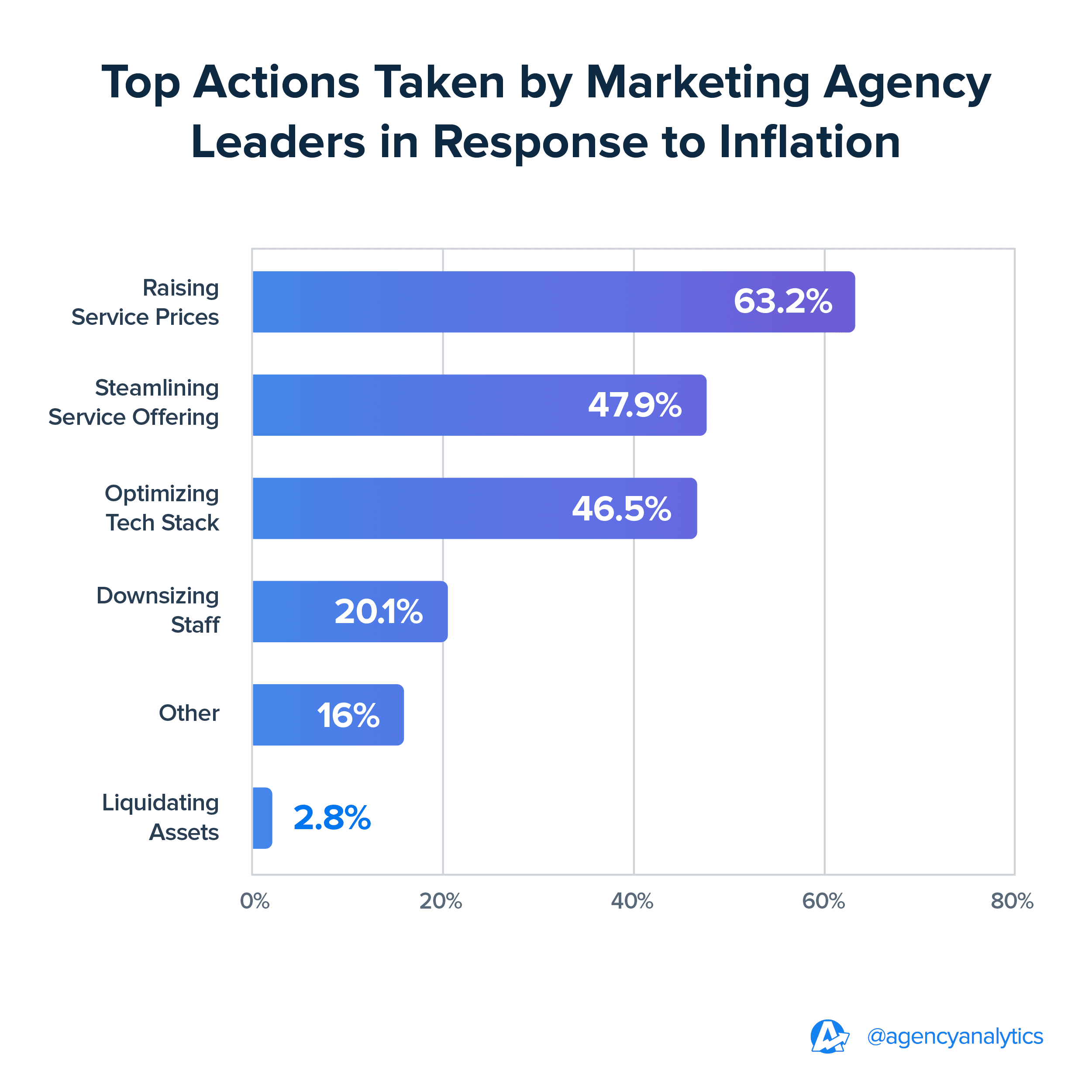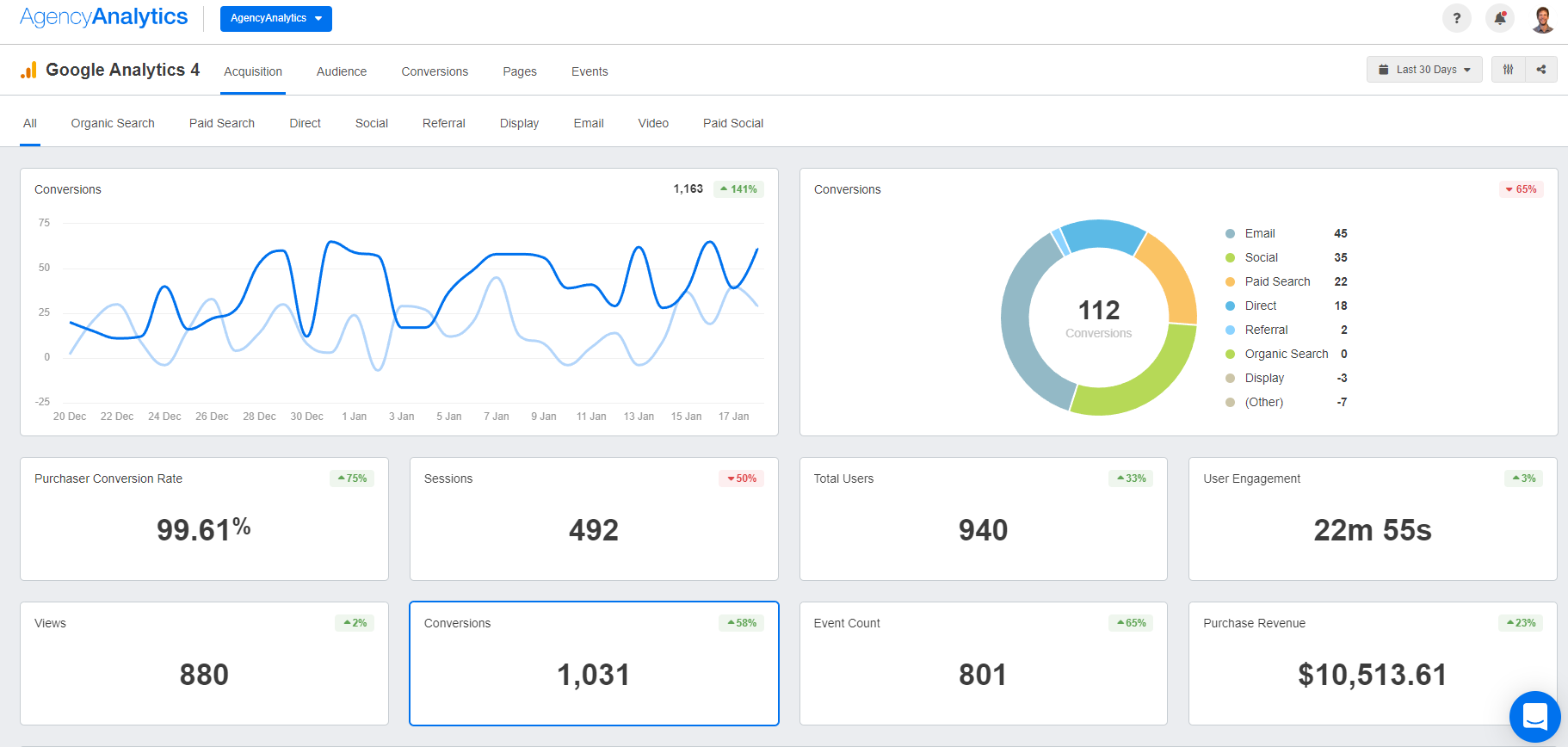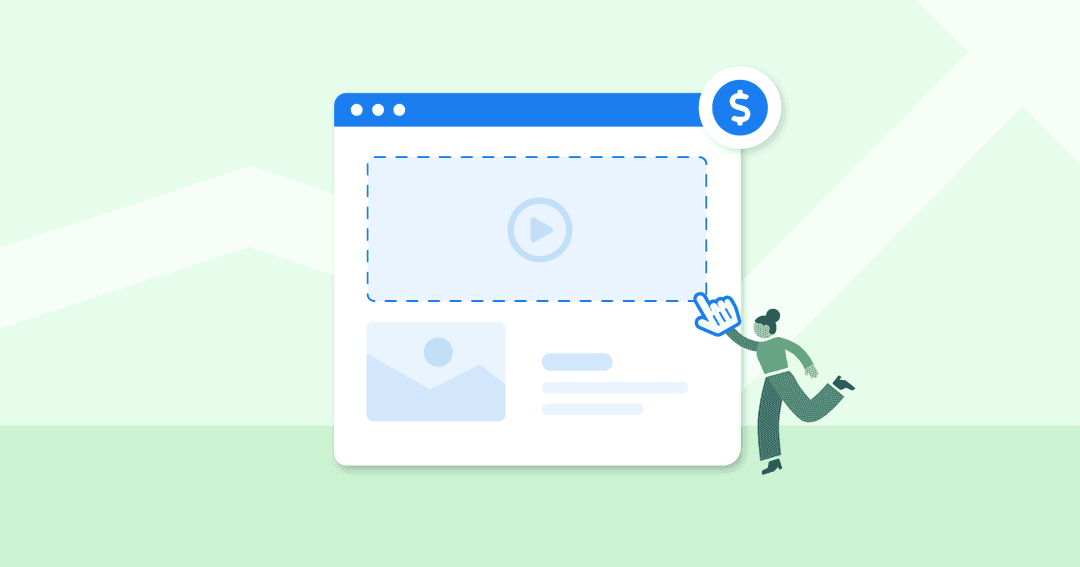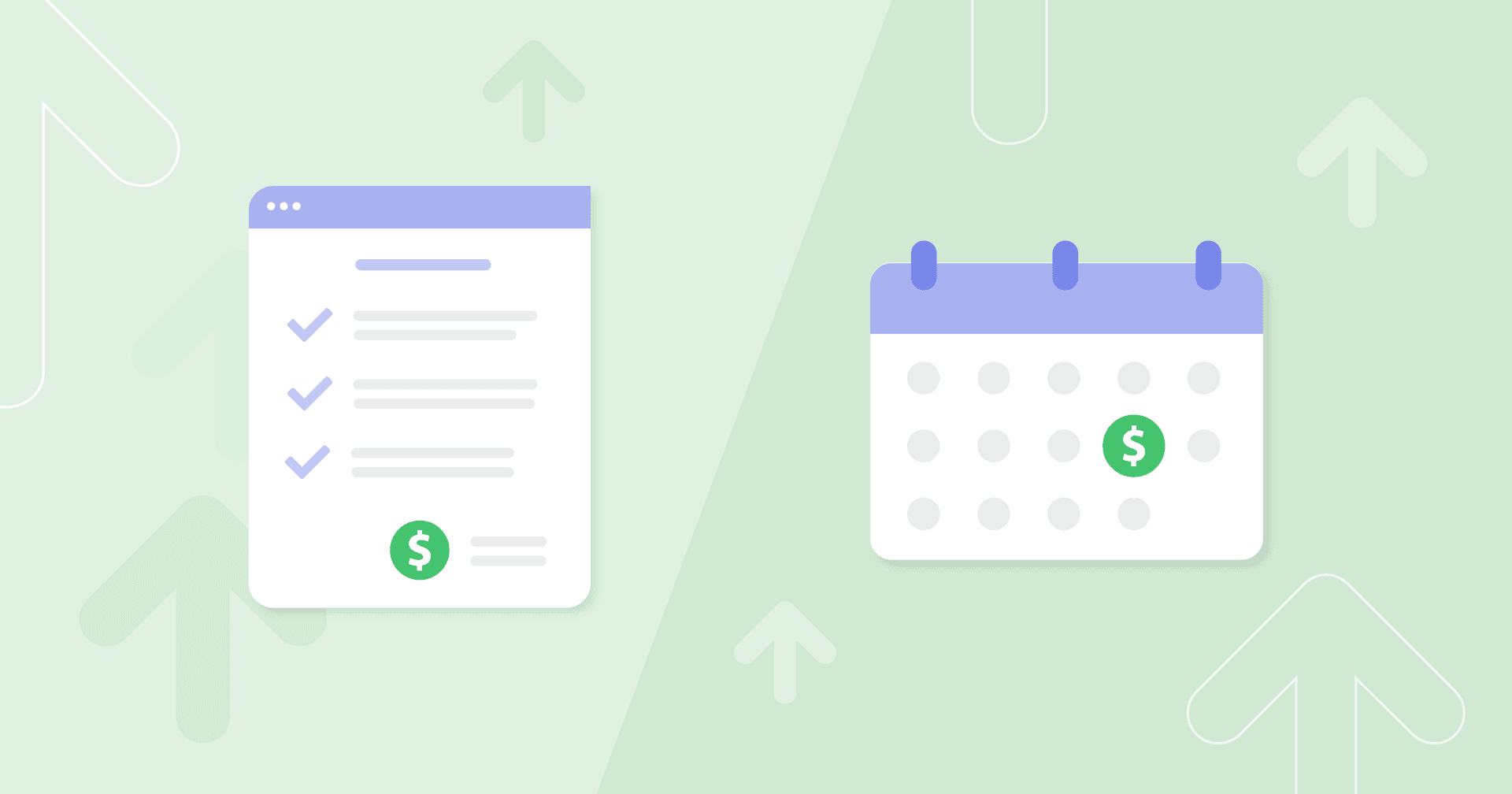Table of Contents
Table of Contents
- Why Your Agency Should Regularly Assess Website Design Pricing
- The 3 Most Common Billing Models for Web Design Services
- Key Factors That Influence a Change in Pricing for Website Design Services
- Examples of Website Design Services and When To Adjust Pricing
- 3 Steps To Establish the Best Pricing Model for a Web Design Project
- Deliver Top-Notch Results That Justify Your Website Design Costs
7,000+ agencies have ditched manual reports. You can too.
Free 14-Day TrialQUICK SUMMARY:
As an agency or web design company, it’s important to ensure you’re charging an appropriate market price. As operational costs increase and market conditions change, adjusting your pricing strategy helps cover expenses while maintaining value. Additionally, an increase in skill sets and specialized services should be reflected in end costs. This article covers when to adjust website design pricing, tips for choosing the right pricing model, and practical examples.
Pricing web design services may feel anything but simple. There are numerous factors to weigh: defining the project scope, deciding between an hourly rate or a flat fee, and benchmarking against competitor pricing, to name a few.
The complexity doesn’t end there. Managing the web design process itself is challenging—whether it’s training your team of web developers or calculating the costs for a detailed, custom website… the considerations are endless.
While it might be tempting to settle on a pricing structure and stick with it indefinitely, doing so is risky. In fact, without regular pricing reviews, you may miss out on revenue opportunities or offer web design costs that simply aren’t competitive. Potential customers are savvy, after all–they’ll likely compare market rates and look for the best value.
It’s exactly why agencies should have a system in place to periodically assess their website design pricing. This strategic approach ensures web development services stay aligned with market rates while reflecting the true value of what you bring to the table.
We re-evaluate our website design pricing every 6 months. This regular review helps us stay aligned with industry trends, account for changes in our cost structure, and ensure we’re offering competitive and fair pricing for our clients.
Bob Reynolds, CEO, ProFusion Web Solutions
In this article, we’ll cover why it’s important to review your pricing strategy, essential elements that influence website design costs, and scenarios where adjusting your rates might be necessary.
Why Your Agency Should Regularly Assess Website Design Pricing
Revamping your pricing strategy may seem like a hassle. However, not doing so could cost you (literally).
Consider this: According to our latest Benchmarks Survey, 77%% of agencies reported that website design is their top service (tying for first place with SEO). In other words, prospects have many service provider options to choose from. And even if they’ve been on your roster for some time, they may still think about the bottom line and look for ways to save money.

To break it down further, here are a few key reasons to tweak your web design pricing strategy:
Adjust for New Technologies and Services: If your agency adopts new design technologies, pricing should reflect this updated value proposition. For example, say your agency starts providing ADA-compliant web design services to ensure accessibility for all users. Because this requires additional internal training or hiring experienced designers, it justifies a higher price point.
Account For Changes in Operational Costs: At the end of the day, your agency is a business. if you’re using more expensive tools to deliver high-quality web designs faster, but your pricing hasn’t been adjusted, profit margins may shrink. Consider all costs involved, such as:
Design tool subscriptions (e.g., Figma, Adobe XD).
Cloud hosting fees.
Costs for premium plugins.
Staff salaries and additional hiring costs (e.g., onboarding freelancers).
Remain Competitively Priced: A market sweep gives an idea of how much others are charging for similar website design services. While it’s not necessarily a reason to lower your costs (especially if you’re more experienced), it ensures you’re not completely off the mark.
Don’t be afraid to adjust based on the value you’re providing. As your experience and portfolio grow, so should your confidence in pricing. Remember, pricing isn't just about what the market will bear; it's about ensuring you have the resources and bandwidth to deliver exceptional quality and service.
Josh Kimmes, CEO, Bear North Digital
The 3 Most Common Billing Models for Web Design Services
When it comes to pricing website design services, agencies typically use one of these three billing models. Here’s a breakdown of each structure and a few considerations.
1. Fixed Pricing
This model involves charging a set fee for the entire project, usually based on a defined scope of work. Clients know the full cost upfront, which provides clarity and budget certainty.
When To Use: This approach works best for projects with a clearly defined scope and timeline, like launching a new website or a one-time redesign. It’s also ideal for clients with straightforward needs and limited budget flexibility.
Pros: It’s predictable for both parties–clients know exactly what they’re paying for, and designers have clear project boundaries.
Cons: There may be limited flexibility; any significant changes to the project scope often require renegotiating fees.
2. Retainer-Based Pricing
A monthly or quarterly retainer fee covers ongoing services, such as website updates, design tweaks, and performance monitoring. It’s essentially a subscription for ongoing services.
When To Use: Use this pricing model for clients who need regular updates (e.g., ongoing product content updates and monthly SEO keyword tweaks for an ecommerce site).
Pros: A retainer provides consistent, recurring income for your agency. It also ensures the client receives priority support and creates a long-term partnership.
Cons: This model can be expensive over time, especially for sites that only need occasional updates. Also, it may be difficult to predict exact usage each month, making ROI less clear for clients.
3. One-Time and Periodic Maintenance Pricing
With this structure, charges are based on individual maintenance or update requests as they arise. Clients only pay when they need specific changes, security updates, or performance optimizations.
When To Use: It’s suitable for clients who don’t need regular updates but want the flexibility of paying as issues arise. This pricing model works well for occasional maintenance (e.g., updating a site’s SSL certificate).
Pros: It’s cost-effective for clients with minimal ongoing needs–they only pay for what they need, when they need it.
Cons: From an execution standpoint, there may be delays or even scope creep if the client doesn’t maintain their site or update it when necessary. Also, unexpected costs could arise if multiple one-time updates are needed.
Key Factors That Influence a Change in Pricing for Website Design Services
If your agency has decided that it’s time to re-examine your pricing for website design services, here are a few things to consider.
Rising Operational and Living Costs Due to Inflation
No agency is an island.
Inflation has a ripple effect, especially for businesses like yours. More specifically, it often leads to increased operational costs, higher vendor fees, and even upticks in subscription fees.
To put this in perspective, 63% of agencies reported raising their service prices due to inflation (according to our last Benchmarks Survey).

In other words, agencies must consider external factors and make pricing adjustments when warranted. Ignoring these shifts could have long-term consequences, like eroded profit margins and compromised business sustainability.
For added context, here’s a granular breakdown of how inflation affects various parts of the business.
Factor | Impact on Website Design Service Pricing |
|---|---|
Software Costs | Inflation could increase the price of essential design tools (e.g., Adobe Creative Suite, Figma). As a result, agencies may have to pass some of these rising subscription fees on to clients. |
Web Hosting and Domain Fees | Hosting services and domain registration costs may increase, often affecting the overall cost of website maintenance packages and related services. |
Employee Salaries | Higher living costs might warrant an increase in employee wages to retain talent. With this added cost, service fees may need to be adjusted to cover the additional payroll expense. |
Office Expenses | If your agency operates a physical office, consider the impact of increased rent and utility bills on your profit margins. |
Freelancer and Contractor Rates | Freelancers and contractors who are outsourced for specialized tasks (e.g., development or content creation) are likely to raise their rates to keep up with inflation. In turn, this affects your operational costs. |
Material Costs | If your agency provides printed branding collateral alongside website design services (e.g., business cards and brochures), inflation could drive up the cost of production and increase overall service prices. |
A Change in Your Ideal Customer Profile (ICP)
When moving through the agency lifecycle, things will change and evolve.
At first, you might say “yes” to any business that comes your way. But over time, your agency may find a niche that fits your expertise and market demand. This often leads to offering specialized services and a deeper understanding of a specific customer type.
When this happens, it's important to adjust your website design costs, which should reflect your expertise and the value provided.
When I started out, I’d build a quality website for just about anyone, and my pricing reflected that. Now, I try to be much more strategic about who we work with. We’ve refined our pricing structure over time to reflect the value we bring to more established businesses and organizations.
Josh Kimmes, CEO, Bear North Digital
Real-Life Observations of Differing Client Needs
To understand how distinct client profiles affect web design cost, consider these observations from Washington-based agency ProFusion Web Solutions.
Compared to other clients, they’ve noticed that B2Bs prioritize answer-driven content and creating a solid brand presence. Most times, they’re interested in attracting high-quality leads who are researching solutions before making a purchase decision.
B2B SMBs typically want validation that they are a real business, so they focus on informational sites that provide answers to what they do and whom they serve. Most are focused on being found in local searches, using Google Business Profile (GBP) and social media to drive traffic.
Bob Reynolds, CEO, ProFusion Web Solutions
On the other hand, B2Cs have a different approach. They may be more focused on capturing immediate attention, driving quick conversions, and encouraging brand loyalty. Simply put, these varying needs will often affect the end pricing.
B2C SMBs are more focused on selling rather than educating and adding ecommerce functions to the site. They’re also using social media and GBP for social proof.
Bob Reynolds, CEO, ProFusion Web Solutions
Think about it–B2B websites may have higher upfront costs for developing complex content, in-depth resources, and large-scale SEO strategies. In contrast, B2C sites might prioritize ecommerce functionality, which will require more ongoing support (e.g., product management and seasonal design changes). This may result in a lower initial fee but higher recurring costs to maintain site performance.
It’s a reminder of why it’s essential to understand needs upfront and ensure your rates make sense–both for your agency and clients.

Keep on the pulse of your clients’ website performance. After delivering your services, monitor key insights like web traffic, engagement, and sessions–explore AgencyAnalytics today, free for 14 days.
An Increase in Your Skill Set and Service Value
As your expertise grows, so does the value you deliver to clients. This increased skill set means that your team is capable of delivering higher-quality work that goes beyond basic design or development. Unsurprisingly, this may mean a website cost adjustment is needed.
Here are a few relevant examples to consider:
Your Team’s Mastery of Highly Specialized Design Trends
As your designers develop advanced skills—like creating micro-interactions or immersive animations—they’re equipped to craft more intricate websites. These elements require more complex coding and design work, which should be reflected in pricing.
Example: Say you’re now able to deliver websites that include custom animations. To account for this increased value proposition, web design companies may increase rates by 20% compared to standard static designs.
The Incorporation of New Technology
As your team starts using sophisticated or new software–like AI and augmented reality (AR)–the value of your services grows exponentially. It may also require additional internal training, which increases both your time investment and project cost.
Example: If your agency adds AI-powered chatbots or AR functionality to a retail business website, you might increase project pricing from $20,000 to $30,000 (i.e., accounting for increased development time and third-party API costs).
Expertise in User Interface (UI) Optimization
As your team's UI design expertise grows, you'll be better equipped to offer advanced services. This may include detailed user journey mapping, usability testing, and A/B testing.
Example: If your agency now offers comprehensive UX audits or continuous usability improvements, you may decide to increase prices by 30%. The project’s complexity–along with the need for a project manager to oversee each stage–may further justify this decision.
Successful Upsell or Cross-Sell of Services
What if there was a way to create more value for clients and generate more revenue?
Luckily, there is: Upselling or cross-selling. It positions your agency as a one-stop shop, saving clients the hassle of seeking additional service providers.
In these scenarios, there’s an opportunity to create custom-tailored packages and come up with appropriate pricing. For example, let’s say your agency currently manages a client’s Google Ads campaign for $2,000 per month. You’ve successfully increased traffic to their website, but the client is concerned about low conversion rates. After analyzing the issue, you’ve identified that their landing pages are poorly optimized.
To fix this issue, your agency proposes a landing page optimization service for a discounted $1,500 fee. It includes redesigning the landing page, improving load time, and adding stronger calls to action. This cross-sell benefits both sides: The client boosts their conversion rate (without straining their budget), and your agency increases revenue.
That said, don’t do it just for the money–ensure the client actually needs additional services. After all, preserving client relationships should come first.
Only upsell services that are absolutely necessary for your clients to meet or exceed their goals. If you don't, then you will erode that relationship over time. Don't sell them fluff because they'll buy it, and neither of you will be better for it.
Jeremy LaDuke, Founder, Epic Nine
Examples of Website Design Services and When To Adjust Pricing
Now that we’ve covered what factors influence pricing, here’s a granular overview of website design services and examples of when to update costs.
1. Responsive Website Design
What Is It: Designing websites that automatically adjust to different screen sizes (mobile, tablet, desktop).
When To Consider a Pricing Adjustment: As new devices emerge or more advanced mobile features (e.g., AR integration) are required, the overall pricing structure should accommodate additional development work.
Example: Retrofitting a site for responsive design might start at $3,000 for a small 5-page site. However, if the client requests advanced mobile features (e.g., functionality across different devices) and a custom website design, their rough estimate could rise to $10,000.
2. Content Creation and Management
What Is It: Creating and regularly updating website content like blogs, landing pages, and product descriptions.
When To Consider a Pricing Adjustment: If the volume or complexity of the content grows (e.g., incorporating multimedia or advanced SEO strategies), consider a higher price tier.
Example: Say a client may pay $1,500/month for four blog posts. If they require 8 posts per month with multimedia content, the retainer could increase to $2,500/month due to the expanded scope and complexity.
3. Wireframing and Prototyping
What Is It: A preliminary design phase where a wireframe is created to map out the website’s structure and functionality.
When To Consider a Pricing Adjustment: If clients require additional rounds of revisions or highly interactive prototypes, their services should transition to a higher pricing tier.
Example: A basic wireframe might cost $1,500. However, if a client requests an interactive prototype with multiple revisions, the pricing could increase to $6,500 due to the added design and development work.
4. Search Engine Optimization (SEO)
What Is It: On-page SEO, including keyword research, meta tags, alt tags, and improving site load times.
When To Consider a Pricing Adjustment: If the scope of SEO work expands (e.g., increased keyword adjustments), the pricing model should factor in this ongoing work.
Example: A local law firm might pay $2,000 for a one-time SEO setup, including keyword research, optimizing meta tags, and improving site load speeds. After experiencing business growth, they don’t have the bandwidth to update their own website and require ongoing SEO management. Their pricing may now increase to $5,000 per month.
5. Migration
What Is It: Moving a website to a new platform or host while preserving data and structure.
When To Consider a Pricing Adjustment: If data complexity increases, such as integrating third-party platforms, a more comprehensive migration package may be required.
Example: Migrating a basic WordPress site might cost $1,000. However, for a Shopify store with hundreds of products and multiple third-party integrations, pricing could increase to $6,000.
3 Steps To Establish the Best Pricing Model for a Web Design Project
Now that we understand the factors that play into the pricing strategy for web design services, let’s explore how to choose a project pricing structure and communicate these costs to your client.
1. Have an Initial Discovery Call
During this first step, your goal is to understand the client’s needs and what they’re aiming to achieve.
It’s not necessarily about listing your services and hoping something stands out. Instead, take the time to understand their pain points, answer questions, and get enough information to create a proposal (if your services align with their objectives). Check out this blog to read about discovery call questions.
When dealing with new clients, exceptional customer service is important to foster trust and loyalty. We ensure our interactions are prompt, helpful, and personalized. Our approach involves active listening, which enhances the overall experience and builds a strong foundation for long-term relationships.
Brian Hong, Owner, Infintech Designs
At this stage, consider asking questions like:
What’s the purpose of your website (e.g., ecommerce, lead generation, portfolio)?
Who is your target audience?
What features do you need (e.g., booking systems, payment gateways, blogs)?
Do you have any design preferences or branding guidelines?
2. Determine the Client’s Website Budget and Your Pricing Structure
Before deciding to build a prospect’s dream website, have a conversation about their budget. More specifically, remember to:
Prioritize Needs vs. Wants: Determine the core functionalities required for the project and suggest add-ons that can be implemented in phases. This helps potential clients focus on essentials while keeping within their budget.
Offer Scalable Solutions: Propose options that allow the website to grow with the business needs. For example, start with a basic site and later add advanced features (like ecommerce functionality).
Be Transparent About Costs: Clearly communicate what each part of the website project will cost, including design, development, content creation, and ongoing maintenance. Transparency builds trust and ensures no surprises later.
Suggest Cost-Saving Alternatives: If a prospect’s budget is tight, suggest alternative approaches like using pre-built themes or templates.
Choosing an appropriate pricing strategy is also just as important–here’s some advice for deciding on the best model.
Pricing Structure | When To Use It |
|---|---|
Fixed-Price Projects | Suitable for well-defined projects with a clear scope, such as a simple website redesign or landing page. |
One-Time and Periodic Maintenance Pricing | Ideal for clients who need occasional updates or security patches without committing to a long-term plan. Perfect for sites that are largely static but require occasional maintenance, like adding new features or troubleshooting issues. |
Retainer-Based Pricing | Handy for ongoing web page support, maintenance, SEO tweaks, or blog content creation. |
3. Develop a Relevant Proposal
At this point, it’s time to create a proposal that outlines your agency’s solution. Be sure to include the following:
Scope of Work: Clearly define the size of the project, including the number of pages and the functionality required. It should specify which platforms will be used (such as WordPress or Shopify) and whether the design will be custom or based on pre-existing templates.
Transparent Design Deliverables: List the assets you’re responsible for, such as the homepage design, landing page tweaks, and mobile optimization. Also, clarify the format of these deliverables and whether mockups will be provided in specific tools (like Figma or as fully coded HTML/CSS files). Additionally, define visual elements like branding, imagery, and typography.
Budget and Timeline: Include clear milestones such as mockup delivery, the first review, and the final handoff. Each phase of the project should have a defined duration, pricing, and clearly defined deadlines.
Revisions and Approval Process: Include a fixed number of revisions (e.g., three rounds). Each phase of the design process should also have approval steps. This ensures that both parties know when feedback is needed.
Finalized Plan: Set a deadline for signing off on this proposal. If the prospect accepts, be sure to schedule regular meetings (e.g., weekly or monthly check-ins). To streamline communication, designate a single point of contact for both your agency and the client. Also, specify the channels to be used (e.g., using a messenger integration in a client reporting tool).
We’re currently working with a flooring installation company and regularly seek their input on design elements and content marketing. This ensures their website reflects the brand identity and meets business goals. By encouraging client feedback, it’s easier to fine-tune your services and align with client expectations.
Brian Hong, Owner, Infintech Designs
Deliver Top-Notch Results That Justify Your Website Design Costs
As we’ve covered, part of running a successful agency is revisiting your pricing strategy.
In fact, it’s a buffer that ensures continued revenue generation, fair market rates, and business longevity. To sum things up, remember to:
Periodically Assess Your Agency’s Website Design Cost: Choose an appropriate timeframe to run a competitor sweep, evaluate internal operational costs, and determine whether adjustments are needed (e.g., every 6 months).
Consider the Impact of External Factors: To ensure profitability, factor in the impact of inflation rates, rising subscription costs, and additional expenses.
Account for Your Team’s Skill Set and Specializations: If your agency adopts new tools and capabilities, ensure your pricing reflects this added value.
Choose an Appropriate Pricing Model: After determining a project scope, decide on the best way to bill for your services and maintain cost transparency.
No matter the service type, your agency should have a system for monitoring results and providing data-driven recommendations. Whether it’s tracking engagement on updated web pages or keeping an eye on ecommerce conversions, AgencyAnalytics ensures this process is seamless.
AgencyAnalytics is an exceptionally impressive tool that has had a profound impact on our team and the success of our clients. The platform offers a wide range of remarkable features that have streamlined our processes and enhanced our capabilities. From automated reporting to the straightforward setup process, AgencyAnalytics has proven to be a comprehensive solution.
Alexa Rees, SEO Manager, seoplus+
Automate data retrieval, assess real-time website performance, and access {{integration}}+ marketing integrations–try AgencyAnalytics today, free for 14 days.

Written by
Faryal Khan is a multidisciplinary creative with 10+ years of experience in marketing and communications. Drawing on her background in statistics and psychology, she fuses storytelling with data to craft narratives that both inform and inspire.
Read more posts by Faryal KhanSee how 7,000+ marketing agencies help clients win
Free 14-day trial. No credit card required.






